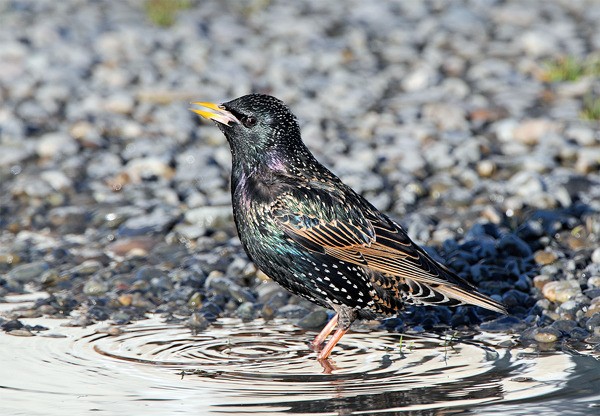Counting and listing bird species is an integral part of bird watching, and I think it serves an important purpose. The Whidbey Audubon Society recently conducted two Christmas bird counts, one centered near Oak Harbor and the other on South Whidbey.
Volunteers at these annual events counted all the birds identified within a 15-mile radius. The data is used to compare numbers of birds from year to year, and to assess trends in their abundance. For 2014, the South End bird count recorded 107 species and a total of 21,333 birds.
Whidbey Audubon also conducts a Bird-a-thon in the spring. That event raises funds, but also offers a competition for teams to tally the greatest number of species in one 24-hour period. The winning team usually reports around 115 species.
Let’s put these numbers in perspective.
If you birded pretty hard, year round, for several years, but only on Whidbey Island, you’d be lucky to squeeze out 200 different bird species. If you expanded your geographic area to Washington state, the bird list jumps to 505 species.
The next size up of birding categories is the number of species in North America. Birders define this category as everything north of the United States and Mexican border, including Canada.
Each Jan. 1 a small cadre of compulsive birders launch yearlong whirlwind journeys to locate as many North American birds as they can in one calendar year. It’s called The Big Year. You may have read the book or seen the movie chronicling that obsession.
Competitors chase all vagrants that happen to soar over or touch down on U.S. or Canadian soil. Storms in the Bering Sea might blow in Eurasian species. Strong winds in northern Mexico could push a typically southern species just over the border into Texas.
The winner of that yearlong competition will log around 700 birds depending mostly on luck and weather patterns. A record of 745 species was achieved in 1998. But that still falls short of the maximum possible of 914 North American species.
The number of species worldwide fluctuates somewhat as new species are discovered and some go extinct. Also, ornithologists are continually discovering more about similar species and might lump two formerly separate species together, or might split subspecies into two separate species. This mainly happens with deep jungle birds and in areas with little scientific research.
To further complicate the matter, there are two systems of classifying birds and they have come up with different worldwide totals. The traditional Clements system, now run by Cornell University, lists about 9,800 bird species. Whereas, the International Ornithological Union lists over 10,000.
Whatever the number, it constantly tempts some birders to travel the world ticking off new species on their life lists.
The closest anyone has come is a British birder named Tom Gullick. He began his quest in 1971 when the former naval officer left Britain to become a birding guide in Spain. He spent the next 40 years trying to see as many bird species as possible. At the age of 81, Gullick spotted his 9,000th bird species, the first person to do so. That happened when he located the Wallace’s Fruit Dove on a remote Indonesian island. At latest count Gullick has officially spotted 9,047 species.
Is your head spinning with numbers? Hold on while I take you one step further.
Have you wondered which is the most abundant bird in North America? I can hear you all shouting, “Starlings!” They are estimated to number 200 million, but that only puts them in third place. “Crows?” Although they seem everywhere, their numbers top around 31 million.
Our beloved American robin earns second place at 320 million. And the winner is the sweet natured Mourning dove with an estimated population of 350 million.
Those results, as well as identification of species in all stages of decline, are made possible by all that counting of birds we birdwatchers do, not only here on Whidbey Island, but around the country. If you’d like to get involved, send me an e-mail and I’ll forward it to the Christmas Bird Count organizers.
Frances Wood can be reached at wood@whidbey.com. Craig Johnson is at Craigjohnson@whidbey.com.



